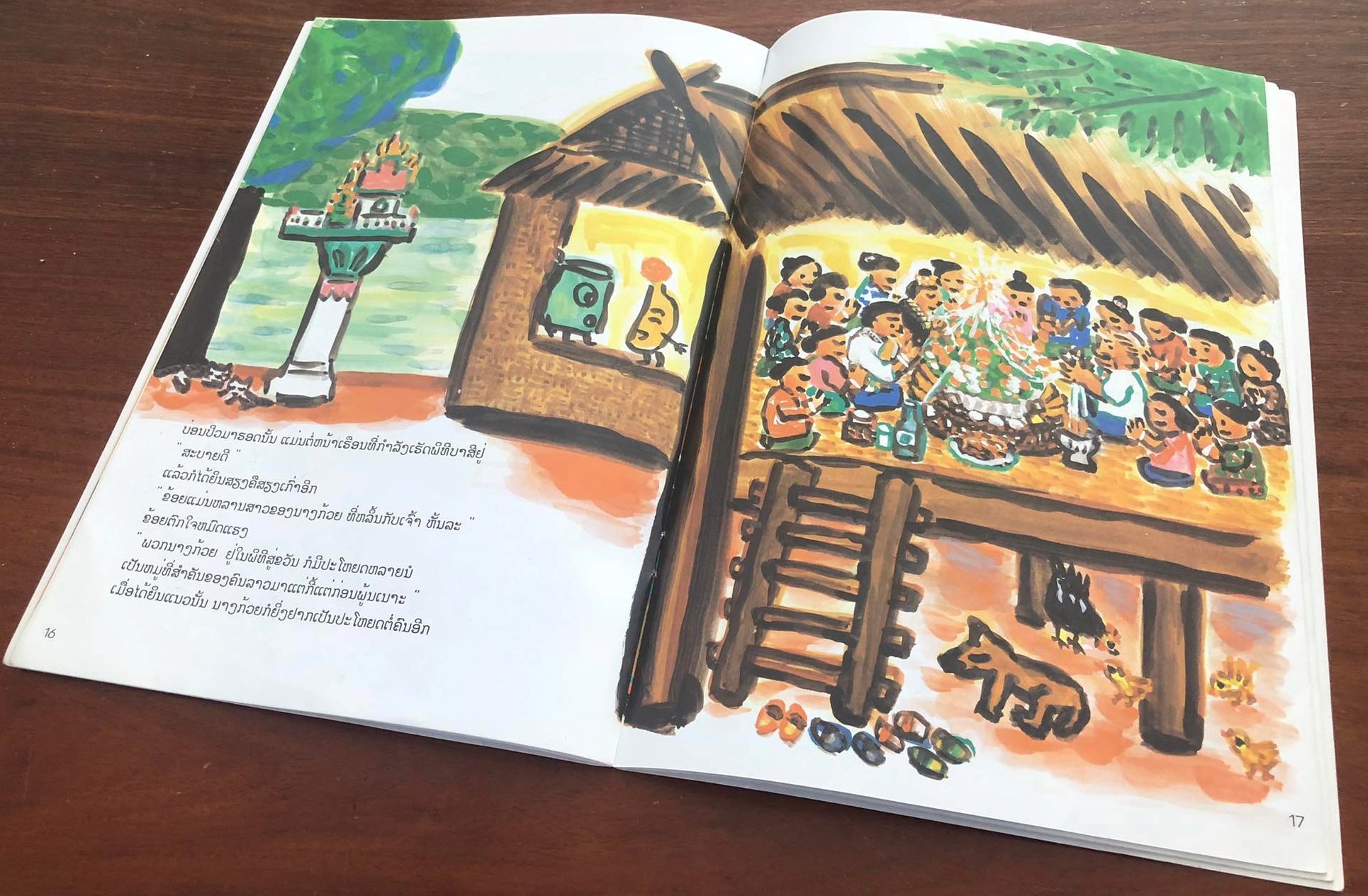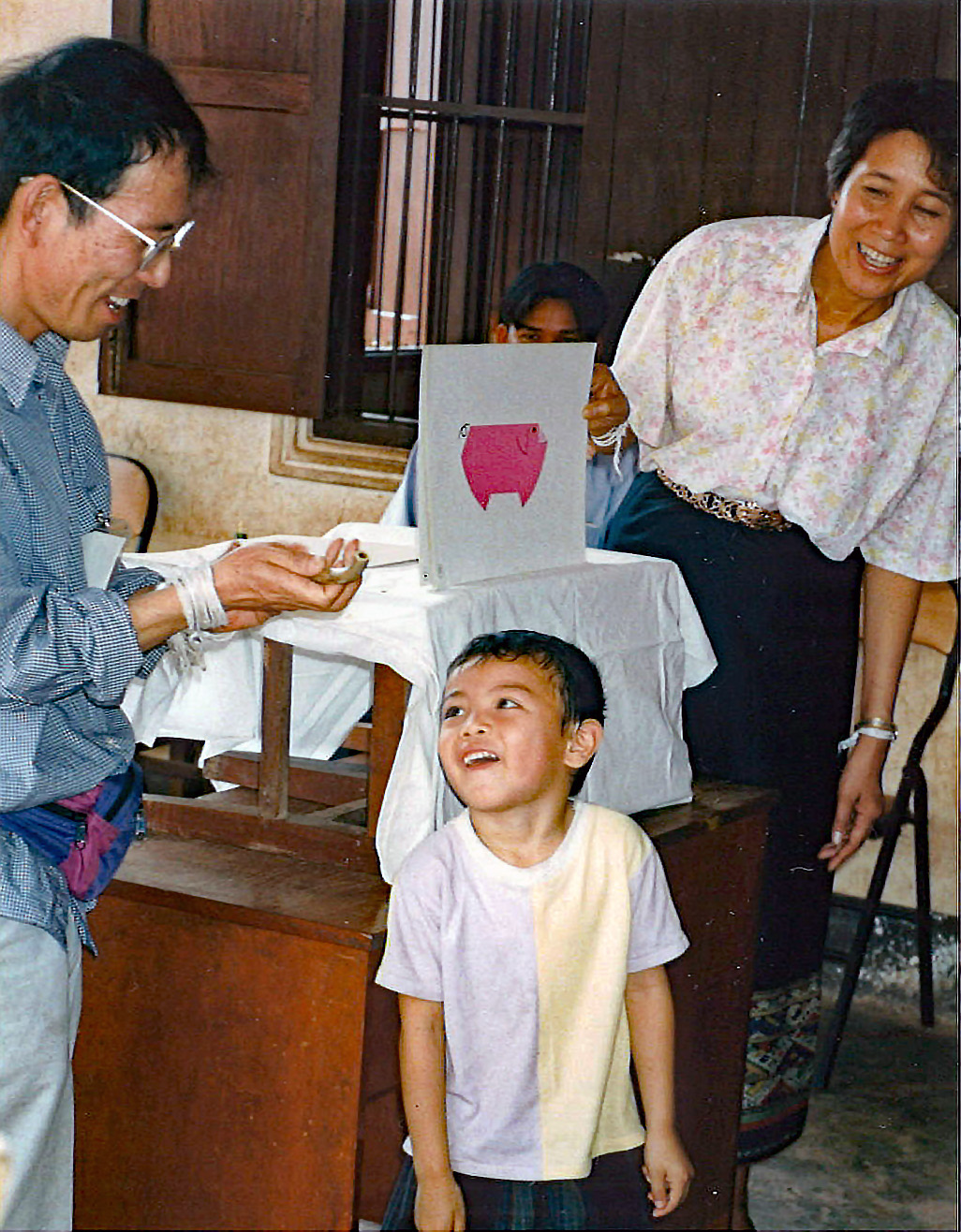Where Are We Going?

The Action with Lao Children (ALC) organization plans to reprint a book called ’Where Are We Going?’. The picture book, published in 2004, tells the story of a banana and a plastic bag, and deals with the theme of the serious trash pollution in the Lao People’s Democratic Republic (Lao PDR). The book was prepared by Mr. Mitsunori Yabe, a children’s book author, in partner with the ALC, with the goal to enlighten and disseminate the importance of environment protection based on the experience and ideas of ‘The Group of Delivering Picture Stories of Environment Protection’. The book is inspired by the Lao people, who were endowed with the rich natural environment, who have been especially troubled by the increasing plastic trash pollution in recent years. In the story, a plastic bag asks a banana where it comes from, and the banana tells the tale of goats that died by eating plastic bags in the oil rig. This episode was suggested by a Lao teacher with the goal to clearly help the children understand the real and serious effects of convenient plastic bags to the environment.
Beginning with Enjoying Together

When Mr. Yabe first visited the Lao PDR in 1995, the atmosphere made him reminisce about his own childhood days in Japan. This inspired him to introduce his favorite childhood pastimes to the locals, such as making tops from empty cans, flutes from plastic bottles, potteries by open burning, and notably traditional picture story shows, known as Kamishibai. He promoted the pictures shows through training courses and performative competitions. This initiative was the beginning of what finally became of his book ‘Where Are We Going?’. This book has been provided in libraries and schools all over the country and used by several international NGOs focusing on local development as a useful textbook for education on environment protection.
Discoveries of the Use of Bananas
At the end of the book, the children are encouraged to demonstrate their new knowledge of different utilization of bananas through games and activities. They will draw pictures of bananas and discuss how to the leaves, flowers, and stems can and are being used in various ways (e.g., wrappers, cooking materials, feeds for pigs, etc.).
Moderators may turn this into a competition where children can compete to develop the largest number of distinct alternative banana use cases. At the end of the game, a staff shows the optional utilization of bananas not proposed by the children (such as paper and warmer for postnatal body) to further engage with them. Children can learn rich natural endowment and knowledge of life through these pleasant activities in their own communities.

